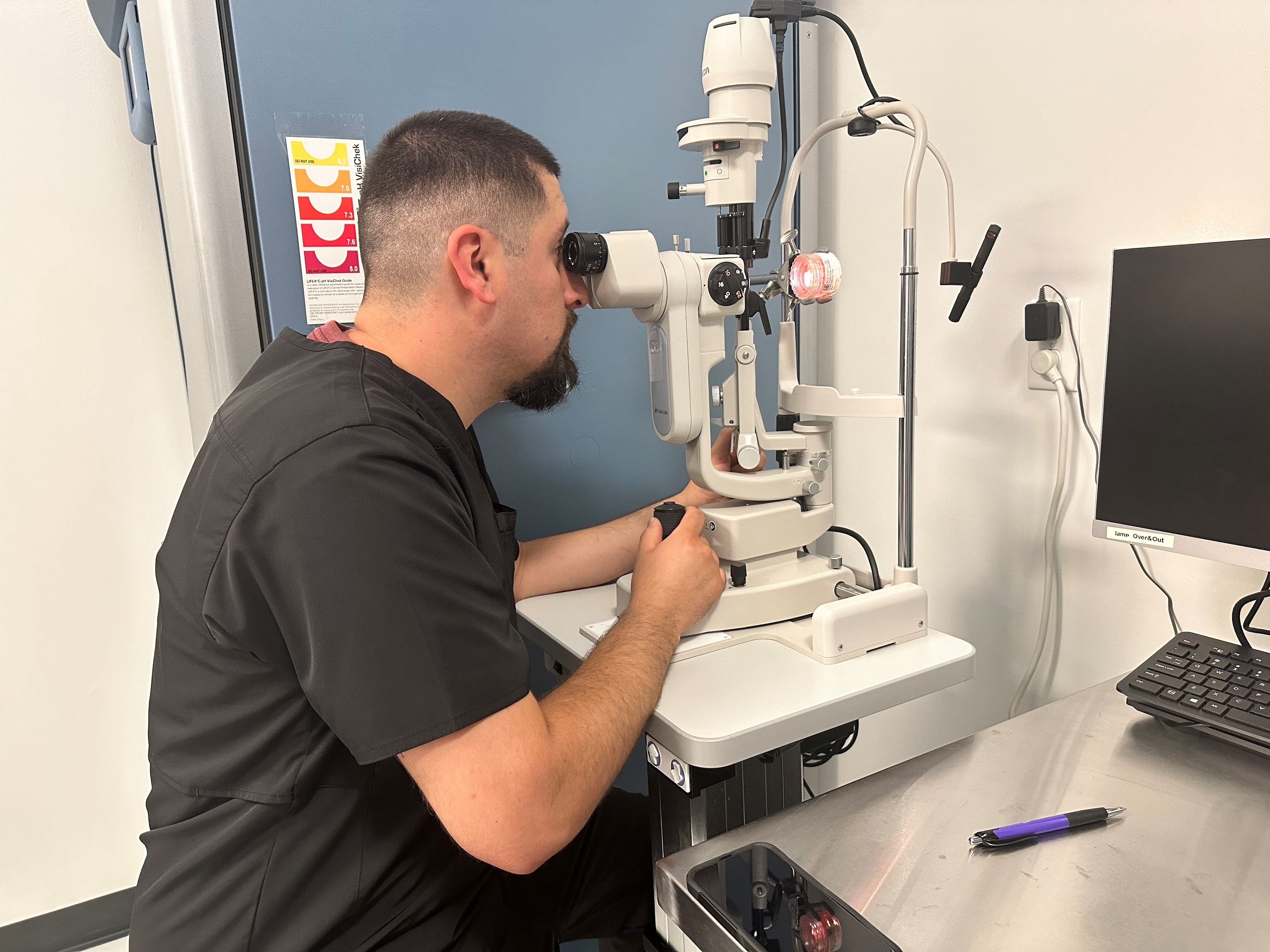A Day in the Life of Gerald Chavez, a Lead Processor at the Rocky Mountain Lions Eye Bank
Gerald Chavez, lead processor, shares the role he plays in eye tissue processing at an eye bank
By Ryeá O’Neill - September 12, 2024
We’ve often heard the expression that the quickest route from point A to B is a straight line. However, when it comes to the eye tissue donation process at Rocky Mountain Lions Eye Bank (RMLEB), there are many twists and turns in a typical day. An eye banker needs to be flexible and always willing to learn in order to see the curve in the path ahead.
A Lead Processor’s Typical Day
A typical day as a lead processor for Gerald (Jerry) Chavez begins with understanding what surgeons need and when they need it. As Jerry starts each day, he reviews the processing schedule, which details surgeon requests for eye tissue, tissue type, and the required timeframe for delivery, to determine his workflow.
After analyzing the processing schedule, Jerry begins removing eye tissue from the refrigerator. As it warms, he preps his areas in a controlled processing environment to perform several quality control tests on the eye tissue. Jerry notes the importance of ensuring the eye tissue remains viable and meets all quality and safety standards to be considered suitable for transplant.
“Using several different microscopes, I look at the eye tissue (cornea) to ensure the endothelial cell count is high enough and of good quality to be viable for transplant,“ said Jerry.
In the controlled processing environment, he performs tissue procedures with a steady hand, following strict aseptic principles and techniques. It takes extreme focus and attention to detail to perform the procedures requested to prepare the eye tissue in different ways according to a surgeon’s specific needs.
Over time and with experience, Jerry notes that as a lead processor, he has learned to recognize the identifying characteristics of each different eye tissue type and that helps him recognize and avoid situations that may become troublesome. He enjoys the challenge of working with the different and unique eye tissue types and having a goal to always work to attain the best possible outcome for transplantation.
Quality Control Leads to Better Cornea Transplants
After warming, eye tissue is moved to the exam area. Jerry explained, “Here we check the eye tissue’s cell health under several different microscopes. This first one is the slit lamp microscope.”
A slit lamp microscope uses a beam of light to evaluate the different layers of the cornea along with cells to help determine viability. The cornea has five different and distinct layers. After using the slit lamp, Jerry transitions to the specular microscope to examine the endothelium layer of the cornea. With the specular microscope lead processors perform a cell density estimate by counting the number of cells in a given surface area and evaluate cell shape and cell size. All these tests are performed with eye tissue transplant viability in mind.
The optical coherence tomography (OCT) microscope is used for procedures when a surgeon has requested eye tissue graft be a certain thickness, for example a DSAEK or DMEK procedure. The OCT microscope helps ensure the thickness of the cornea by measuring specific layers, according to a surgeon’s specifications.
“One of the biggest challenges is staying focused and keeping your hands steady,” said Jerry. He understands the importance of honoring the donor and their wish to help restore sight for others. Jerry says as a lead processor, he knows that using the microscopes and tools in the controlled processing environment helps ensure consistent quality and viability, which can impact and lead to better outcomes for each transplant recipient.
Once the eye tissue is determined to be viable for transplant, Jerry hands it off to the distribution team. The distribution team is the final step in the process where eye tissue is matched to a surgeon’s request and delivered locally or shipped for both domestic and international placement.
An Early Spark Grows to Recovery Technician and Beyond
Jerry developed an interest in science and laboratory work during his grade school years. He was always doing experiments and tinkering with things. The desire to know the why and understand what was happening fueled Jerry’s ambition to learn. He graduated with a Bachelor of Science in Chemistry, with an emphasis in Biochemistry, and had a desire to work in a laboratory. When he saw a recovery technician position available at RMLEB, he applied for the position. He was interested in the work of the eye bank, the mission to help others, and the advancement opportunities available within the organization. He worked as a recovery technician for one year.
When the lead processor position became available internally, Jerry immediately applied. With his degree and interest in working in a lab, he was eager to take on this new role and its associated responsibilities. He enjoys learning new things and the challenges that come with each day as a lead processor.
When asked what he finds most rewarding about working at RMLEB, Jerry responded, “One of the most rewarding things I find working here at the eye bank is making a difference and playing a big part in people recovering their eyesight.”

Working at RMLEB means having a position with a purpose. We exist to restore hope where hope may have been lost. To learn more about our current career opportunities, view openings, and/or subscribe to job opening updates.
